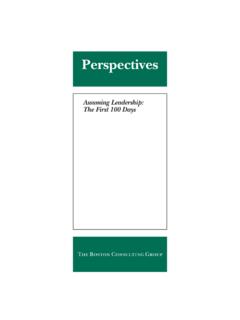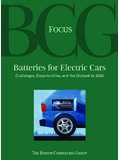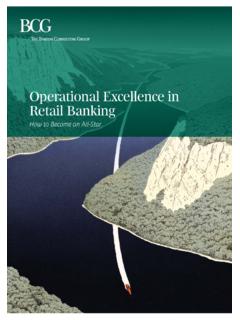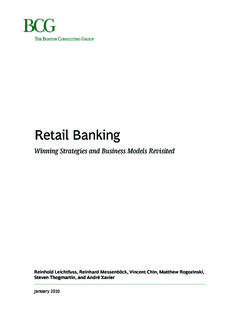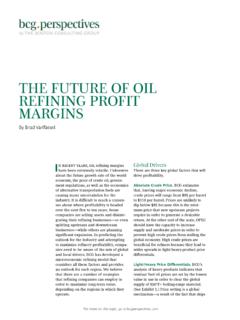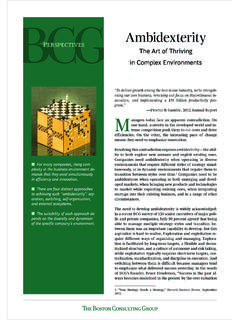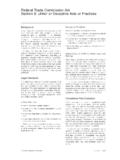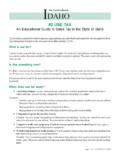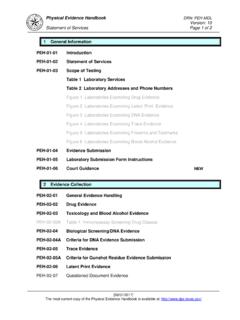Transcription of The European Automotive Aftermarket Landscape - BCG
1 The European Automotive Aftermarket LandscapeCustomer Perspective, Market Dynamics and the Outlook to 2020 The Boston Consulting Group (BCG) is a global management consulting firm and the world s leading advisor on business strategy. We partner with clients from the private, public, and not-for-profit sectors in all regions to identify their highest-value opportunities, address their most critical challenges, and transform their enterprises. Our customized approach combines deep in sight into the dynamics of companies and markets with close collaboration at all levels of the client organization.
2 This ensures that our clients achieve sustainable compet itive advantage, build more capable organizations, and secure lasting results. Founded in 1963, BCG is a private company with 77 offices in 42 countries. For more information, please visit European Automotive Aftermarket LandscapeCustomer Perspective, Market Dynamics and the Outlook to 2020 Michael BookEric EllulCornelia ErnstBenjamin FroweinEwald KreidRafael RiloGeorg SticherHadi ZablitJuly 2012 The European Automotive Aftermarket Landscape2 IntroductionSince June 19, 2011, the automobile industry in Europe has been subject to EU Regulation 566/2011, according to which manufacturers are obligated to release elec-tronic data enabling the exact identification of replacement parts for vehicles.
3 This will further strengthen the position of independent service providers in the after-market sector, a sector that includes Automotive services , parts, and the maintenance business. In the future, independent operators will thus have the same access to electronic repair and diagnostic information enjoyed by authorized repair shops. With this, the EU Commission is systematically following the path it has pursued since the turn of the century with a variety of regulatory amendments ( , 1400/2002; 715/2007; 692/2008; 595/2009; 461/2010; 64/2012). The goal is to create a competitive Landscape in Europe in which independent repair shops and autho-rized repair shops compete to serve different customer needs and segments.
4 The idea is to strengthen the customer s position and to encourage intense competition on all levels of the repair and parts value chain. So far, the Commission seems to have been successful in realizing this goal: Inde-pendent service providers have in recent years further expanded their parts and service businesses at the expense of OEM; traditional authorized repair shops are experiencing (price) pressure from large independent service providers; and in the meantime, non-traditional players have also entered the market: Insurers, fleet operators, and leasing firms have long since begun to strike exclusive agreements with independent repair shops, effectively lowering their costs and channeling customers to contractually agreed independent service providers.
5 Brisk competition and price pressure have been advantageous for European cus-tomers. The European Aftermarket has thus been transformed, in terms not only of prices, but also of customer satisfaction just as the EU Commission wanted. In summer 2011, the European Automobile Manufacturers Association (ACEA) contracted BCG to perform a detailed analysis of the Aftermarket in Europe with the view to establishing the facts around the state of competition in the sector and overall customer satisfaction in this area. BCG has investigated the current market The Boston Consulting Group3dynamics and identified trends that will shape the coming decade.
6 Our analysis was based on three central questions currently being asked by both market players and the EU Commission: How do customers benefit from the changes? How intense is competition now? And in what direction will the market develop? Building on our industry expertise we conducted extensive interviews with automo-tive industry experts from across the Aftermarket business spectrum. A statistically relevant survey of over 1,500 customers in five European countries Germany, France, Spain, Great Britain, and Poland provided the customer perspective.
7 Analyzing the results, we developed forecasts about the trends that will characterize the market. Based on these results, we were able to identify opportunities and chal-lenges facing the various market the highly fragmented overall market for Automotive services , two channels can be differentiated: The first, the authorized channel, is comprised of vehicle manufacturers (VMs), their country organizations, dealer networks, and repair shops, both single- and multi-brand. The second, independent channel is com-prised of independent service providers (or independent operators).
8 The central players in wholesale are independent distributors and purchasing networks com-prising numerous players that join forces to bundle volume and realize better prices. Finally, the independent channel also includes companies that collect, process, and sell data. On the retail level, independent service providers can be broken down into three Service eventsAMechanical/electronic repairsAccident repairsWear-and-tear repairsMaintenanceConsumables and accessoriesTiresPrivate old-vehicle owners (8 years and up)Private used-vehicle owners (5 8 years)Private new-vehicle owners (0 4 years)
9 Business customersAuthorized repair shopsAutomotive centers/ fast fittersFranchise repair shopsIndependent repair shopsService and parts providersBCustomer segmentsCEU countriesExhibit 1 | European Automotive Aftermarket complex and fragmented Market driven by three dimensions: service events, service & parts providers, and customer segmentsThe European Automotive Aftermarket Landscape4types of repair shops: (1) franchises that offer a full range of services and are part of a dealer network or franchise system; (2) Automotive centers and fast fitters, , repair shops with standardized and often limited service offers that frequently include parts retail.
10 And finally, (3) small, corner repair shops that offer the full range of services and function completely repair shops (AR)Country organizationLeasing firms, roadside assistance, insurancers, manufacturers (VM)Diagnostic toolmanufacturersPartsmanufacturersOESS ingle-brandrepair shopsPurchasing networksIndependent wholesalers (IWS)RepublishersMulti-brandrepair shopsFranchiseworkshopsIndependentrepair shopsAutomotive centers/fast fittersIndependent repair shops (AR)Authorized channelIndependent channelExhibit 2 | Overview of European Aftermarket landscapeAftermarket divided into authorized and independent channelsThe Boston Consulting Group5 The customer perspective: Increasing choices High quality, lower costsEuropean drivers are profiting from increased market transparency and lower service costs.
